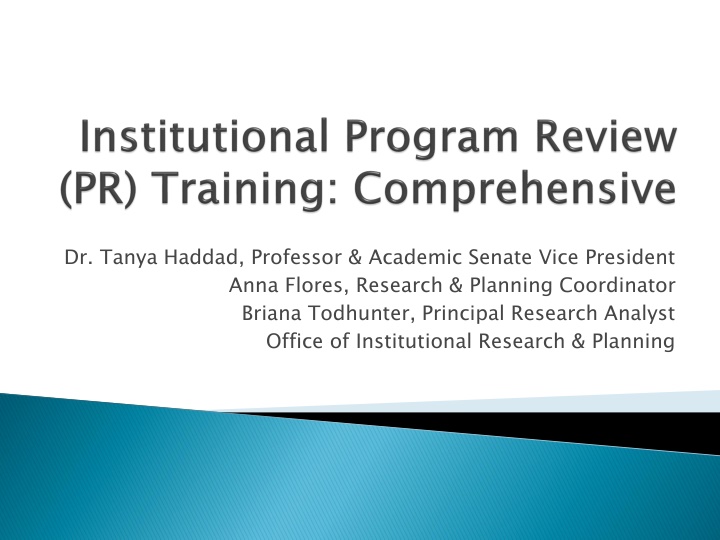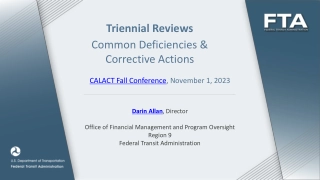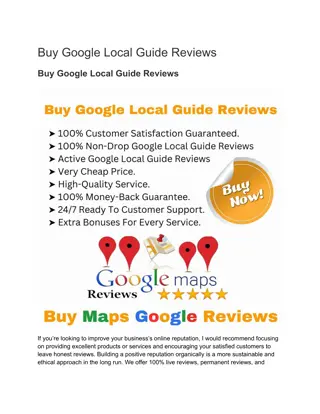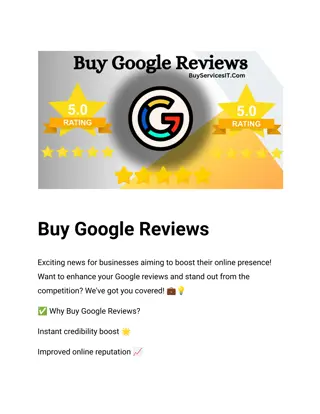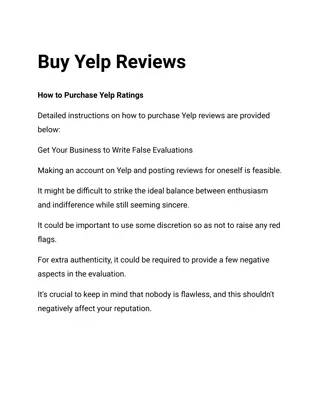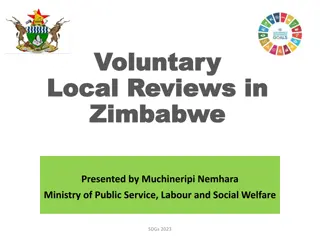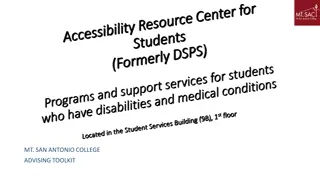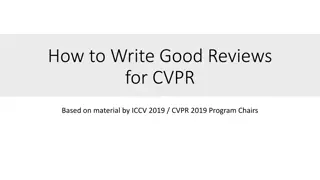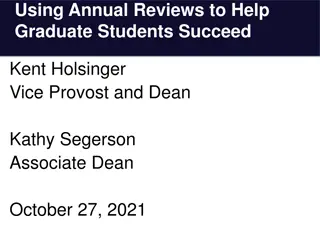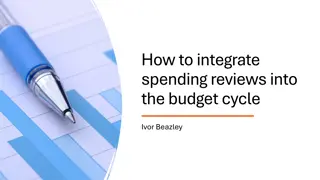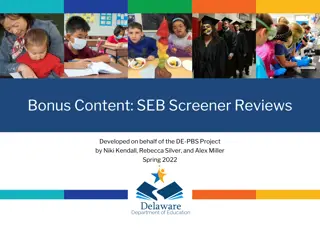Strengthening Academic Programs with Comprehensive Reviews
Academic and administrative program reviews play a crucial role in enhancing educational offerings through evaluation and redirection strategies. The process involves analyzing student outcomes, program development, faculty support, and accreditation requirements to ensure quality and relevance. By aligning program goals with the overall mission of the institution, addressing equity issues, and making informed decisions about program viability, these reviews pave the way for continuous improvement and excellence in education.
Download Presentation

Please find below an Image/Link to download the presentation.
The content on the website is provided AS IS for your information and personal use only. It may not be sold, licensed, or shared on other websites without obtaining consent from the author.If you encounter any issues during the download, it is possible that the publisher has removed the file from their server.
You are allowed to download the files provided on this website for personal or commercial use, subject to the condition that they are used lawfully. All files are the property of their respective owners.
The content on the website is provided AS IS for your information and personal use only. It may not be sold, licensed, or shared on other websites without obtaining consent from the author.
E N D
Presentation Transcript
Dr. Tanya Haddad, Professor & Academic Senate Vice President Anna Flores, Research & Planning Coordinator Briana Todhunter, Principal Research Analyst Office of Institutional Research & Planning
Communicate the Timeline for Completion Discuss the Purpose of Program Review Provide Data Sources PR Application Training
C:\Users\Owner\AppData\Local\Microsoft\Windows\Temporary Internet Files\Content.IE5\VM5HER3J\clip-art0020[1].jpg Program Review is Required Every Year Every 4 Years a Comprehensive Review is completed In the year that a Comprehensive Review is not completed, an Annual Update is completed Validated for completeness and quality How do I know if I am completing Annual update or Comprehensive? How do I know if I am completing Annual update or Comprehensive? See SWC Program Review webpage See SWC Program Review webpage
Academic & Administrative program reviews are intended to strengthen and redirect programs Examples Include Providing: Successful arguments for new faculty positions Program development Combining closely related majors Creating new majors New equipment to improve learning or service quality Analyze student learning outcome (SLO) results & Required for Accreditation
Mission, Planning, and Student Success: How program goals align with the overall mission of the district. Include dialogue on diversity, equity, and inclusion. Mission, Planning, and Student Success: Course Success and Completion using 4-5 years of data to determine trends and/or conclusions. Identify equity gaps using data disaggregated by race/ethnicity and other relevant characteristics. Identify any Programs for Discontinuance by analyzing 4-5 years of success and completion data and enrollment trends. Provide comprehensive information on the viability, suspension, and discontinuance considerations.
Student Learning Outcomes (SLOs) Describe major findings based on review of disaggregated program and/or course student learning outcome data and describe any planned or implemented program improvements. Student Learning Outcomes (SLOs) Changing Conditions in the Field Provide data collected to determine program modifications that respond to changing conditions in the field. Changing Conditions in the Field Staffing & Facility Resource Sufficiency Sources of evidence provided for staffing needed (ex: Faculty Hiring Prioritization (FHP) list or data from Business Objects) Sources of evidence provided for facilities/equipment (ex: Facilities Master Plan). Professional Development Activities (Optional) Staffing & Facility Resource Sufficiency Professional Development Activities (Optional)
Section 3 Title & Major code # of students declared in major code # of students who completed the program in the last 5 years (cumulative) Section 3: List of all Degrees/Certificates : List of all Degrees/Certificates Section 4 Articulation Course Title & Number from Catalog Last Date of activation, modification, or inactivation Year for next review, modification, or inactivation Section 4: Course Review for Recency and Articulation : Course Review for Recency and Degrees/Course Activation -> Curricunet # of Students -> Shared Data file or Business Objects
Google Drive with data from Business Objects & eLumen Performance data from Business Objects (enrollment, course completion and success, program awards) Program SLO Data from eLumen Check Google Drive through G Suite Apps or click on link from e-mail *Research Dashboards* https://www.swccd.edu/administration/institutional-research-and-planning/data- dashboards.aspx Datamart https://datamart.cccco.edu/datamart.aspx Student Success Metrics (SSM) Dashboard https://www.calpassplus.org/LaunchBoard/Student-Success-Metrics.aspx ISLO/GESLO Reports https://www.swccd.edu/administration/institutional-research-and-planning/student- learning-outcomes-slo/_files/2021-islo-geslo-report.pdf PSLO reports also available from SLO Liaisons
Colleagues Examine their Programs and make Goals for improvements/innovations Use Institutional Goals to align with Program Goals Goal-Setting connects improvements to Measurable Actions/Outcomes Program Review is tied to strategic resource allocation
Section 1: Goals/Activities Goals: Create or modify existing ones Describe the goal set to improve the program s effectiveness and quality, while connecting to an overall institutional goal Activity: Create or modify how to accomplish your goal Use research data, SLO/PSLO data, studies, or analysis to justify how the activity will accomplish the goal Determine how your activity will be assessed Section 2: Request resources if needed for your goal Resource requests require a rationale that clearly demonstrates how the resource is needed to reach the associated goal and describes the expected outcome/improvement of acquiring the resource Incorporating data to support the rationale is preferred Cost estimates must be included in a resource request (ex: PDF copies of written quote, online cart, or other documentation).
Goal: Activity: Activity Explanation/Justification: performance gaps in Black or African American, Hispanic, Asian, and Two or more races. These categories indicate an overall low to no proficiency ranging from 20-43%. These performance gaps show inequity within the classroom. These equity gaps can be closed by creating 360-degree whiteboard classrooms, allowing for more student interactions with the instructor being the guide on the side instead of the sage on the stage in the front of the class. Studies of classrooms which allow students to work in groups on the vertical wall surfaces show increase in equitable practices, students participating more equitably within the classroom, increased student interaction with the course material and more student discussion. Activity Assessment: through collection and study of changes in equity gaps with PSLO data. Goal: Redesign classrooms to eliminate equity gaps Activity: By Fall 2023 create 360-degree whiteboard classrooms Activity Explanation/Justification: A review of the 2022 PSLO data shows Activity Assessment: This activity will be assessed in the Spring of 2024
Resource Rationale: in Black or African American, Hispanic, Asian, and Two or more races. These categories indicate an overall low to no proficiency ranging from 20-43%. In a study on work surfaces impact on math learning, Liljedahl found whiteboards promoted better engagement & math thinking than the use of paper & pencil. His research documented the following about student behaviors using whiteboards: Students are more eager to start the task and began discussing and writing sooner, they are more likely to participate, discuss, and interact to transfer knowledge, and students are more likely to persist through challenges. Because written work shows non-linearity that reflects the thinking process and because it is easy to erase, students are willing to take risks & errors are not a big deal... Source: https://accelerationproject.org/Blog/360-degree-whiteboards-an-equity- strategy-to-improve-outcomes-in-precalculus. Cost: Resource Rationale: A review of the 2022 PSLO data shows performance gaps Cost: $25,500 (Cost Estimate Attached) Note: This is an actual Program Review submitted and funded in 2022.
Contact Anna Flores Email: Phone: 619 Contact Anna Flores Email: aflores@swccd.edu Phone: 619- -216 aflores@swccd.edu 216- -6615 6615
